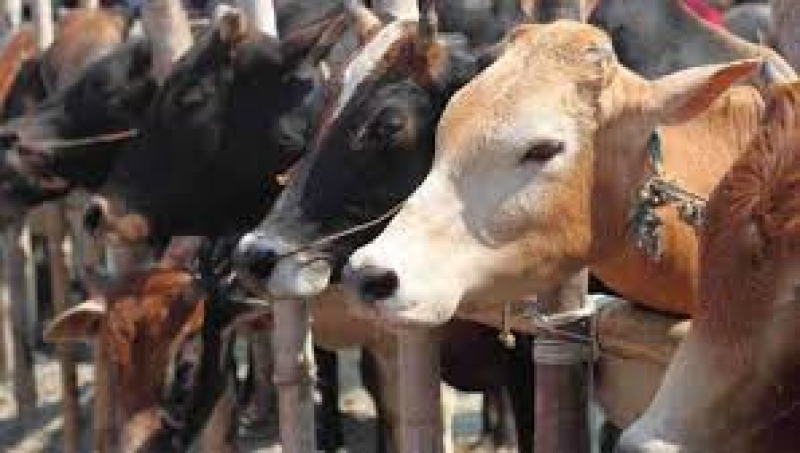- Bangladesh capital market extends losing streak for second day |
- Bangladesh celebrates Victory Day Tuesday |
- 'Different govts presented history based on their own ideologies': JU VC |
- US Issues Travel Alert for Bangladesh Ahead of Election |
- Air ambulance carrying bullet-hit Hadi flies for Singapore |
Faridpur char dwellers hope for Eid livestock sales

With the holy festival of Eid-ul-Azha just two weeks away, hopes are running high among the low-income residents of the remote char areas of Faridpur, who see the occasion as their biggest economic opportunity of the year.
Spanning across three upazilas of the district, the chars (shoals) along the Padma and Arial Khan rivers are home to thousands of families, most of whom rely on livestock farming for their livelihood.
Each household typically raises multiple animals throughout the year with the aim of selling them ahead of Eid, when demand peaks.
Durign a recent visit to the remote areas of North Channel, Decreer Char and Char Madhabdia unions, as well as parts of Charbhadrasan and Sadarpur upazilas, reveals a familiar scene—men, women and even children tending to cattle, goats and sheep.
Families are seen herding their animals in the morning for grazing and bringing them back before sunset, continuing this cycle year-round.
Firoz Molla, a resident of Char Dholai in North Channel Union, owns 26 sheep.
He is optimistic about fetching a good price for them this Eid, which he says would help secure his family’s livelihood for the next year.
Similar expectations are echoed across the 13 unions located within Faridpur’s char region.
According to North Channel Union Chairman Mehedi Hasan Mintu, approximately 45 percent of the district’s sacrificial livestock demand is met from the char areas.
“Almost every household in the chars rears cows, goats or sheep. These animals, raised on natural forage from the river islands, are in high demand across the district,” he said.
Residents like Habib Matubbor, Fazlu Sheikh and Afzal Hossain expressed how they wait the entire year for Eid-ul-Azha, pinning their financial hopes on the festive livestock market.
They said if prices are good this year, they will see a decent profit.
Dr Sanjib Kumar Biswas, District Livestock Officer, said the char regions contribute significantly to the district’s livestock supply, reports UNB.
“This year, the total demand in Faridpur is around 1,08,000 animals, while the combined supply from both char and non-char areas exceeds 1,10,000,” he noted.

